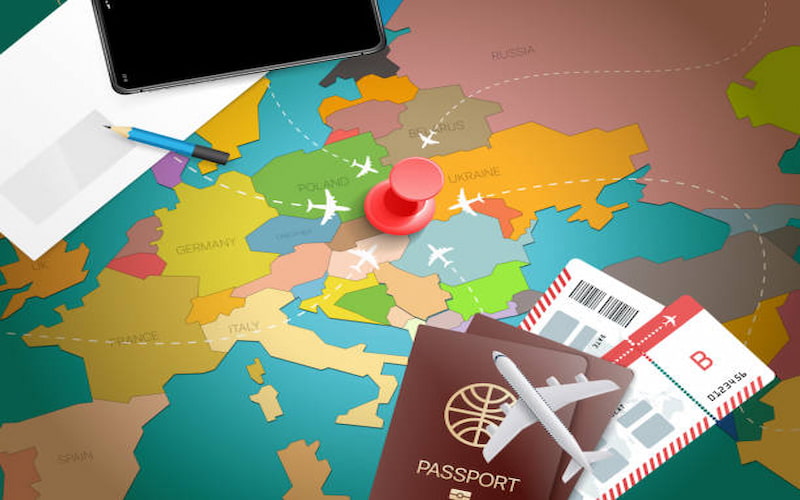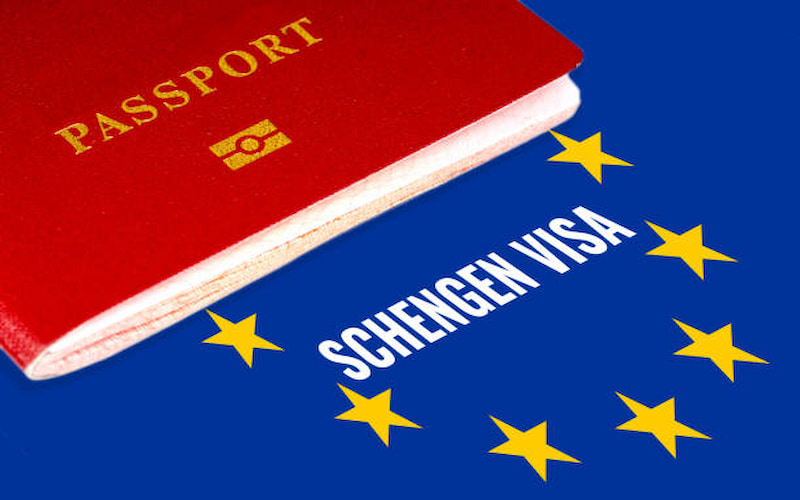How to Plan a Multi-Country Trip in the Schengen Zone

Planning a multi-country adventure across the Schengen Zone is a dream come true for many travelers seeking to explore Europe’s rich cultural diversity, historical landmarks, and scenic landscapes—all with one visa. The beauty of the Schengen Agreement lies in its seamless travel access: once you enter one Schengen country, you can move freely between 26 member nations without additional border checks. However, to ensure a smooth journey, it’s crucial to understand the travel logistics and prepare all necessary documents for Schengen visa approval. From itinerary planning to visa application, each step must be strategically organized to avoid travel hiccups and fully enjoy your European tour.
Whether you're a first-time visitor or a seasoned explorer, a well-researched Schengen tourist visa guide is essential to help you navigate the visa process. Knowing which country to apply through, what your main destination is, and how long you’ll stay in each place are all factors that impact your visa approval. Moreover, you'll need to submit supporting paperwork, such as travel insurance, proof of accommodation, flight bookings, and financial statements. Crafting a clear, detailed travel plan that aligns with your visa application not only boosts your chances of approval but also enhances your travel experience by ensuring everything is in place before you even step on the plane.
How to Plan a Multi-Country Trip in the Schengen Zone
Understand the Schengen Zone
The Schengen Zone comprises 27 European countries that have officially abolished passport control at their mutual borders. This means once you enter one Schengen country, you can freely travel to the others without additional visas or border checks. Countries like France, Germany, Italy, Spain, and the Netherlands are part of this agreement.
The Schengen Zone offers seamless travel experiences, especially for tourists who want to explore diverse cultures, landscapes, and cuisines in a short time. However, travelers must still respect visa regulations, entry limits, and local laws.
Step 1: Choose Your Travel Route Wisely
Start your planning by selecting the countries you want to visit. Consider the following:
Geography and Proximity: Group nearby countries together to save travel time and money.
Personal Interests: Choose destinations based on what excites you—art, history, nature, adventure, or food.
Transportation Options: Check for well-connected countries via trains, buses, or budget airlines.
A classic route could be something like Paris → Amsterdam → Berlin → Prague → Vienna → Venice → Rome. This path covers Western, Central, and parts of Southern Europe, offering rich variety in experiences.
Step 2: Check Documents for Schengen Visa
Before booking anything, it’s essential to understand the documents for Schengen visa. Applying for the visa involves preparing a few standard papers:
A valid passport (with at least 6 months of validity)
Completed visa application form
Passport-sized photographs
Proof of accommodation for the entire trip
Round-trip travel reservations (flights or trains)
Travel insurance with a minimum coverage of €30,000
Proof of financial means (bank statements, salary slips, etc.)
A cover letter explaining your travel plans
A detailed travel itinerary
Depending on your nationality and the consulate’s requirements, you may be asked for additional documents.
Step 3: Decide on the Main Country for Visa Application
Even though the Schengen visa allows travel across all member countries, you must apply through the consulate of the country where:
You will spend the most number of days, or
The country of first entry, if stays are of equal length in all countries
This is a crucial part of the Schengen tourist visa guide. For example, if you are visiting France for 5 days, Germany for 4, and Italy for 3, you must apply through the French consulate.
Step 4: Craft a Balanced Itinerary
When planning a multi-country trip, don’t try to squeeze too many places into a short timeframe. Aim for at least 2-4 days in each city. Keep these in mind:
Travel Time: Factor in transportation time between countries.
City vs. Countryside: Mix big cities with smaller towns or nature escapes.
Pace: Avoid burnout by including rest or light activity days.
Local Events: Check for festivals, holidays, or special events that might affect hotel availability or crowd sizes.
A well-thought-out itinerary not only impresses the visa officer but also helps you enjoy each destination fully.
Step 5: Book Transportation and Stay Strategically
Transportation between countries can be surprisingly affordable and efficient in Europe. Consider the following:
Trains: Ideal for scenic routes and city-to-city travel.
Budget Airlines: Ryanair, EasyJet, and Wizz Air offer cheap flights but watch for baggage rules.
Buses: FlixBus and Eurolines offer budget-friendly and comfortable cross-border travel.
When booking accommodations, choose centrally located stays that offer access to local transport and tourist spots. Platforms like Booking.com and Airbnb are popular across Europe.
Step 6: Budgeting Your Schengen Trip
Planning your budget early helps you avoid financial surprises. Expenses to include:
Visa Fees: Approximately €80 for adults
Transport: Flights, trains, buses, and local transport cards
Accommodation: Costs vary widely depending on the country and city
Meals: Dining out vs. cooking in hostels or apartments
Attractions: Museum tickets, guided tours, park entries
Miscellaneous: Shopping, souvenirs, emergencies
Western Europe tends to be more expensive than Eastern or Southern Europe. For instance, Switzerland, Norway, and Paris are costlier, while Poland, Slovakia, and Portugal are relatively budget-friendly.
Step 7: Get Travel Insurance
Having valid travel insurance is mandatory for Schengen visa approval. Your policy should:
Cover medical emergencies and repatriation
Be valid throughout the Schengen Zone
Have a minimum coverage of €30,000
In addition to being a visa requirement, travel insurance provides peace of mind in case of medical emergencies, trip cancellations, or theft.
Step 8: Use the Right Travel Apps
Tech-savvy travelers can make use of mobile apps to simplify their journey:
Maps: Google Maps or Maps.me for navigation
Translation: Google Translate for quick language help
Currency Conversion: XE Currency for real-time exchange rates
Public Transport: Citymapper or local metro apps
Accommodation: Booking.com, Hostelworld, Airbnb
Itinerary Management: TripIt or Wanderlog
Having these apps can help you navigate, communicate, and manage your trip like a pro.
Step 9: Understand Visa Validity and Schengen Rules
The Schengen visa typically allows stays of up to 90 days within a 180-day period. Make sure:
You don’t overstay the visa
You retain boarding passes and accommodation receipts as proof of movement
You keep copies of your documents while traveling
Some consulates issue visas for the exact travel period, while others may offer longer validity with multiple entries. Double-check your visa’s start and end dates.
Step 10: Know Local Laws and Customs
Each Schengen country has its own unique culture and legal norms. Respect local laws, dress codes, and etiquettes. For instance:
Tipping culture varies widely from country to country.
Drinking in public might be restricted in some areas.
Jaywalking can attract fines in Germany or Switzerland.
A little cultural research can go a long way in making your trip smoother and more respectful.
Step 11: Carry Essentials for Multi-Country Travel
Packing for a trip that covers different countries and climates needs some strategy:
Layered clothing for varying temperatures
A universal adapter for different socket types
Copies of travel documents and visa
Local SIM card or international roaming plan
Lightweight backpack for day trips
Travel light, but be prepared for changing weather and terrain. Also, always keep your passport, visa, and insurance documents easily accessible.
Step 12: Stay Connected and Safe
Stay in touch with family or friends during your trip. Use free Wi-Fi at hotels and cafes, or get a European SIM card for seamless data access. Safety-wise:
Avoid carrying too much cash
Use anti-theft backpacks or money belts
Beware of pickpockets in busy tourist areas
Save emergency numbers for each country you visit
Traveling solo or in a group, safety should always be a priority. Share your itinerary with someone back home and regularly check in.
Conclusion:
Planning a multi-country trip in the Schengen Zone offers an exciting opportunity to explore the rich cultures, histories, and landscapes of Europe with ease. With just one visa, you can visit 26 different countries without border restrictions, making it an ideal choice for travelers who want to make the most of their European adventure. However, careful preparation is essential. From creating an efficient itinerary to understanding entry requirements, each step helps ensure a smooth and memorable journey. Knowing how to get a Schengen visa is crucial, as it opens the door to this seamless travel experience.
Before you pack your bags, make sure you’ve gathered all the required documents and planned your route logically, considering visa rules and duration of stay in each country. Understanding the process for obtaining a Schengen visa for Europe travel helps avoid last-minute surprises. Whether you’re visiting iconic cities or hidden gems, proper planning can make your trip truly unforgettable. Want to see full details? Click here to view the complete Schengen visa.
Note: IndiBlogHub features both user-submitted and editorial content. We do not verify third-party contributions. Read our Disclaimer and Privacy Policyfor details.







